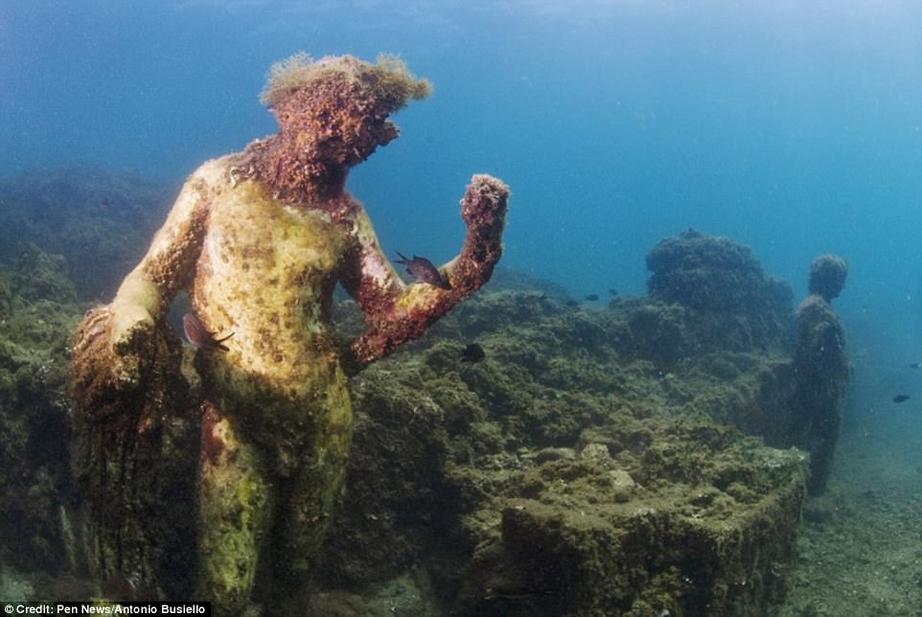Revealed: the sunken Roman city that was once the resort of the super rich but now lies beneath the waves with its treasures intact
- Baiae was the Las Vegas for the super-rich of ancient Rome and was synonymous with luxury and wickedness
- But as the centuries passed, much of it was lost to the sea as volcanic activity caused the coastline to retreat
- The quickly retreating coastline forced all of Baiae under water and into the Gulf of Naples in modern-day Italy
- The site has since been re-discovered, 1,700 years after disappearing beneath the waves on Italy's west coast
The sunken city of the Caesars, lost for 1,700 years beneath waves off of Italy's west coast, has been revealed in stunning new photographs taken by divers who were allowed to explore the area.
Baiae was the Las Vegas for the super-rich of the 1st Century's ancient Rome, covered in sprawling mansions and synonymous with luxury and wickedness, historians claim.
But as time passed, much of it was lost to the sea as volcanic activity caused the coastline to retreat 400metres inland, forcing the entire city underwater into what is now the Gulf of Naples in modern-day Italy.

Baiae was the Las Vegas for the super-rich of the ancient Rome, covered in sprawling mansions and synonymous with luxury and wickedness, historians claim. The 1st Century city has been revealed in stunning new photographs taken by divers who were allowed to explore the area

Much of the city was lost to the sea as volcanic activity caused the coastline to retreat 400metres inland, forcing it underwater into what is now the Gulf of Naples in modern-day Italy

Incredibly, parts of the city are still in-tact 1,700 years later. Pictured above, a diver shows off a tiled floor that was discovered in a search of the city

Antonio Busiello, who lives in Naples, photographed the site and found that roads, walls, mosaics and even statues had survived the ravages of time

Busiello said that the statues and mosaics that are still standing show the opulence that filled the city when it was still livable

In an artist's recreation of what Baiae would have looked 2,000 years ago before it was lost beneath the waves, there are sprawling mansions and squares located right on the water
The site has since been re-discovered, 1,700 years after disappearing beneath the waves on the west coast of Italy.
Divers were allowed to explore the site recently and snapped photos of the treasures that can still be found at the underwater city.
Antonio Busiello, who lives in Naples, photographed the site and found that roads, walls, mosaics and even statues had survived the ravages of time.
The 45-year-old said: 'The beautiful mosaics, and the villas and temples that have reemerged or are still underwater show the opulence and wealth of this area.
'It was considered one of the most important Roman cities for centuries. Pliny the Younger used to live here and from here, across the gulf, he witnessed and described the 79 AD eruption of Mount Vesuvius that destroyed Pompeii and Herculaneum.'
For the rest of this article please use source link below.
